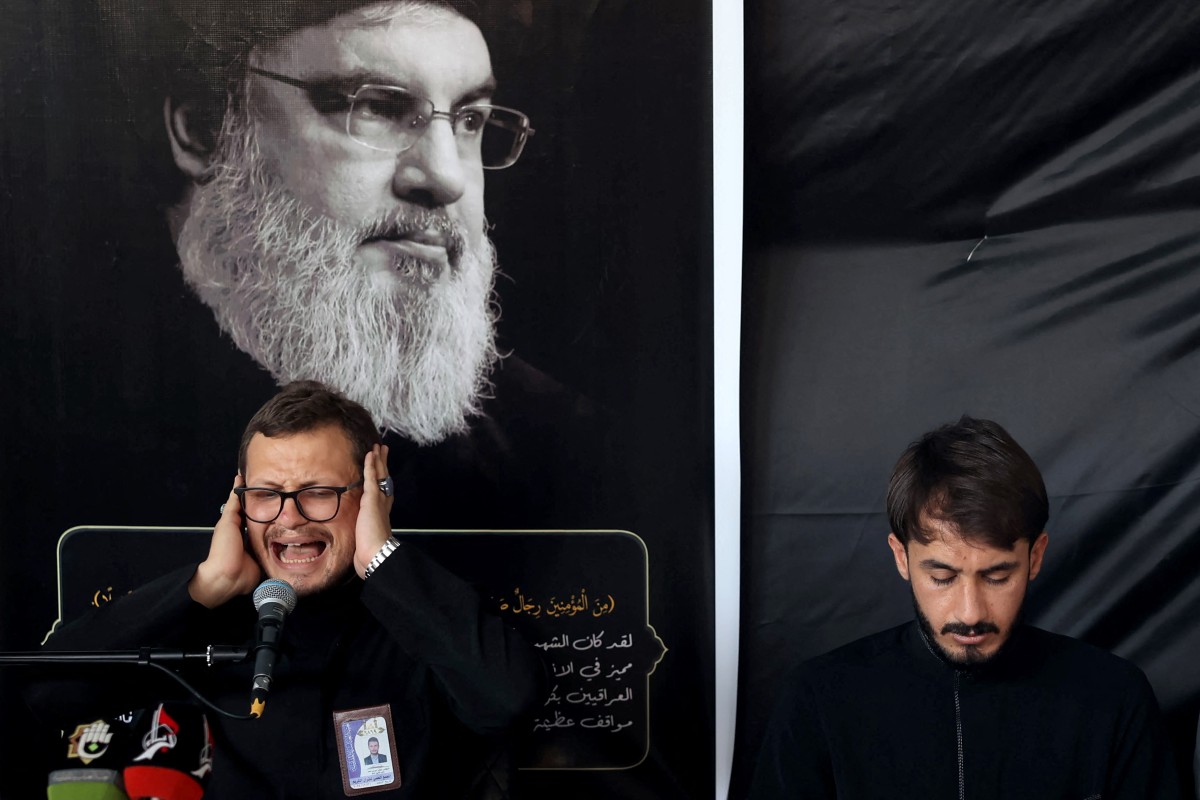Nicosia, Cyprus – Israel and Lebanon’s Shiite Muslim movement Hezbollah, whose leader Hassan Nasrallah was killed in an Israeli air strike on a Beirut suburb, have been sworn enemies for decades.
Here is a history of their long conflict:
1982: Israel invades Lebanon; birth of Hezbollah
Hezbollah — the “Party of God” — was born in the wake of Israel’s 1982 invasion of Lebanon in the country’s eastern Bekaa area, and overseen by Iran’s Revolutionary Guards Corps.
In 1985 Hezbollah emerges from the shadows, establishing its armed wing the Islamic Resistance in Lebanon as the spearhead in the fight against Israel.
It carries out suicide car bombings and human wave attacks in the south against Israeli forces and their ally the South Lebanon Army (SLA), a mostly Christian militia.
1992: Nasrallah becomes the group’s leader
In February 1992 an Israeli helicopter gunship attack kills Hezbollah secretary-general Sheikh Abbas al-Musawi.
Aged just 32, Hassan Nasrallah is elected his successor. His baptism of fire comes a year later when Hezbollah, the only group that refused to give up its weapons after Lebanon’s 15-year civil war ended in 1990, battles a large-scale Israeli incursion dubbed “Operation Accountability”.
The stature of the man considered at his death to be the most powerful in Lebanon begins to build.
It is enhanced even further in 1996.
1996: ‘Operation Grapes of Wrath’
On April 11, 1996, Israel launches “Operation Grapes of Wrath”, raids aimed at breaking Hezbollah’s military potential and halting the firing of rockets into northern Israel.
Over 17 days, Israeli forces launch 600 raids and fire 23,000 shells, killing 175 people in Lebanon, mostly civilians. More than 300,000 refugees flee their homes.
International calls for a ceasefire mount after artillery bombards a United Nations camp where fleeing civilians had sought shelter. More than 100 people are killed.
On April 26 an agreement is signed ending the Israeli operation.
2000: Israel withdraws from Lebanon
Israel’s army withdraws in May 2000 after its years-long occupation. The pull-out from its so-called “security” zone is intended to end a situation that had cost it 1,000 men.
Nasrallah will be seen as the architect of this climbdown, after a war of attrition by Hezbollah forces a change of heart among the Israeli population.
This pressure also leads to the Israeli government accepting in 1998 a UN Security Council resolution demanding its immediate withdrawal from south Lebanon.
2006: Israel-Hezbollah war
In 2006 Hezbollah seizes two Israeli soldiers on the Israel-Lebanon border. Hezbollah says it wants to exchange the pair for prisoners held inside Israel, but the outcome is war.
The conflict lasts through July and August and causes 1,200 deaths in Lebanon, mostly civilians, and 160 in Israel, mostly military.
Israel is unable to vanquish Hezbollah, which paints the conflict as a victory.
2023-2024: a new front opens up
When war begins between Israel and Hamas after Palestinian militants in the Gaza Strip attack southern Israel on October 7, Iran-backed Hezbollah forces in south Lebanon fire into Israel in support of Hamas.
After nearly a year of cross-border exchanges of fire, Israel on September 23 severely escalates deadly air strikes targeting Hezbollah in Lebanon.
Israel says it is acting to end attacks on it from south Lebanon.
Israel’s military says it has killed most of Hezbollah’s senior leadership. The Hezbollah chief is killed in an air strike on the group’s southern Beirut bastion.







